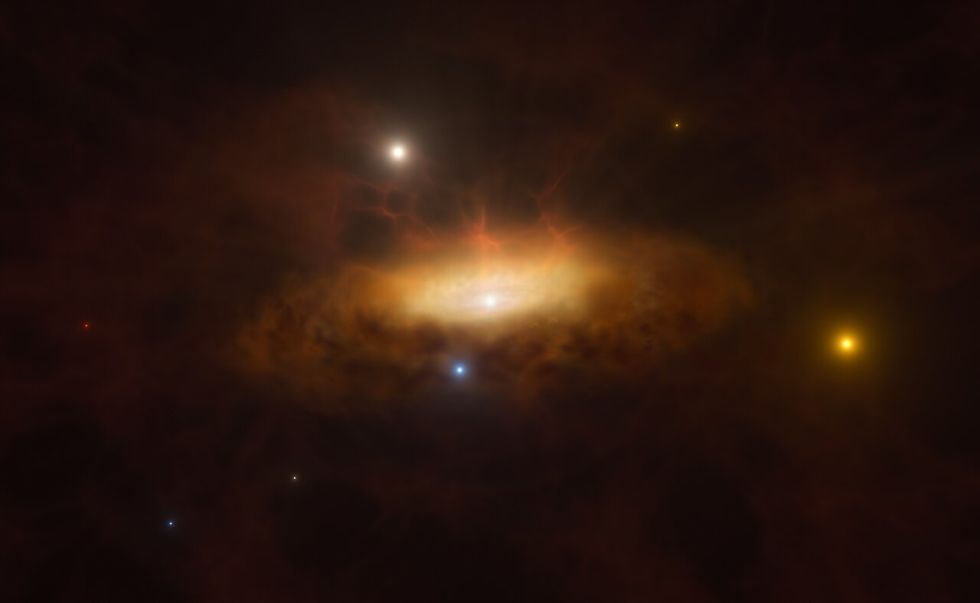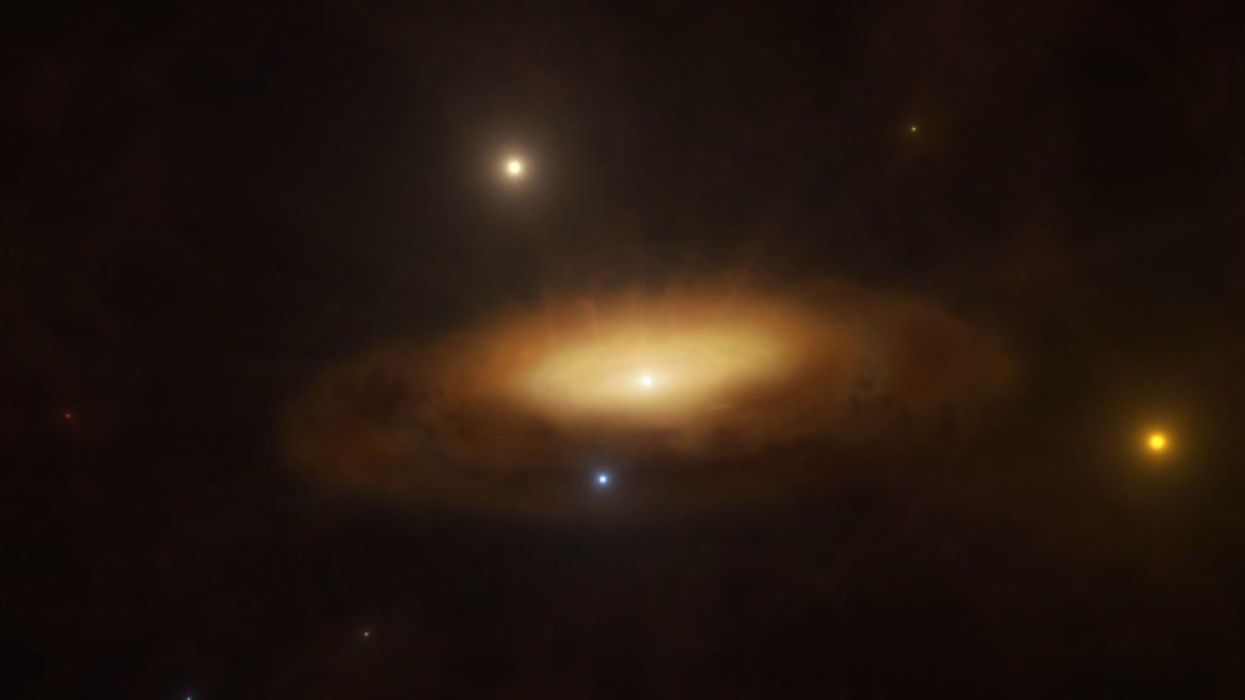Science & Tech
Jake Brigstock
Jun 26, 2024
Astronomers View Birth Of Massive Black Hole In Real-Time In New First
Cover Media - Shareable / VideoElephant
Astronomers have said they are seeing changes in a galaxy for the first time which is likely the result of the sudden awakening of a massive black hole at its core and they're not sure why it's happening.
In 2019, the SDSS1335+0728 galaxy, described as "previously unremarkable", suddenly started to shine brighter than ever.
Astronomers used data from several space and ground-based observatories to track how the galaxy's brightness varied.
And now it's classified as having an 'active galactic nucleus' (AGN) which is a bright compact region powered by a massive black hole.
In a statement, Paula Sanchez Saez, an astronomer and lead author of the study accepted for publication in Astronomy & Astrophysics, said: "Imagine you've been observing a distant galaxy for years and it always seemed calm and inactive.
"Suddenly, its [core] starts showing dramatic changes in brightness, unlike any typical events we've seen before."

Some phenomena such as supernova explosions or tidal disruption events, when a star gets too close to a black hole and tears apart, can make galaxies light up but this usually lasts at most for a few hundred days.
SDSS1335+0728, a galaxy 300 million light-years away in the constellation Virgo, is still growing brighter today more than four years after it was first seen.
"The most tangible option to explain this phenomenon is that we are seeing how the [core] of the galaxy is beginning to show (...) activity," said co-author Lorena Hernandez Garcia, from MAS and the University of Valparaiso in Chile.
"If so, this would be the first time that we see the activation of a massive black hole in real-time."
Massive black holes exist at the centre of most galaxies including the Milky Way.
Scientists said follow-up observations are still needed to rule out other possibilities.
Sign up for our free indy100 weekly newsletter
How to join the indy100's free WhatsApp channel
Have your say in our news democracy. Click the upvote icon at the top of the page to help raise this article through the indy100 rankings
Top 100
The Conversation (0)














